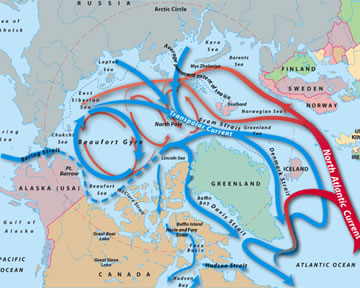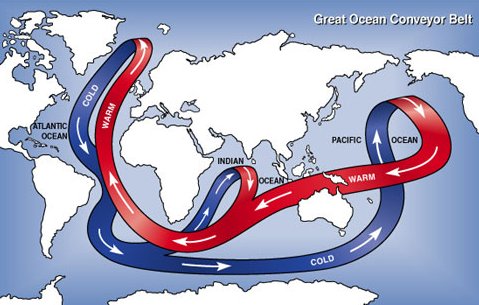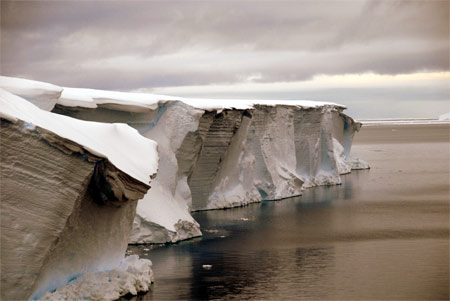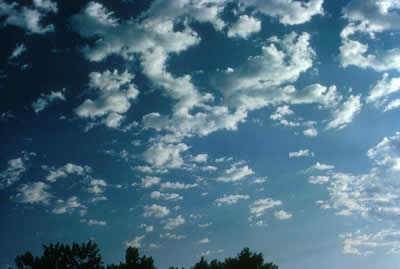Changing Planet: Fresh Water in the Arctic
Scientists are concerned that melting Arctic sea ice will increase the amount of fresh water in the Beaufort Gyre, which could spill out into the Atlantic and cause major climate shifts in North America and Western Europe. Watch the Changing Planet: Fresh Water in the Arctic video.
Lesson Plan: The Case of the Leaky Gyre
You might also be interested in:

Changes in the cryosphere have a considerable impact on global climate. This is because the cryosphere is an important part of the Earth system and because it is so interconnected with other parts of the
...more
To understand the dynamics of the Arctic Ocean and its impact on surrounding areas and global climate, one must understand the fundamentals of the system. Cold, relatively fresh water comes into the Arctic
...more
Seawater moves through the Atlantic as part of the Global Ocean Conveyor, the regular pattern by which seawater travels the world’s oceans. The water in the Global Ocean Conveyor circulates because of
...more
Many educators are now finding opportunities to teach about Earth's climate and climate change in their classrooms. Windows to the Universe provides an interlinked learning ecosystem to a wealth of resources
...more
Looking for online content that can be used for a climate change education course or module? Pages linked below can be used to support an introductory climate change education for either a unit or a full
...more
Altocumulus clouds (weather symbol - Ac), are made primarily of liquid water and have a thickness of 1 km. They are part of the Middle Cloud group (2000-7000m up). They are grayish-white with one part
...more
Altostratus clouds (weather symbol - As) consist of water and some ice crystals. They belong to the Middle Cloud group (2000-7000m up). An altostratus cloud usually covers the whole sky and has a gray
...more














